#singapore laksa recipe
Text
Discover the Secret behind this Irresistible Laksa Seafood Linguine
Laksa seafood linguini
Get ready to tantalize your taste buds with a sensational dish: Seafood Laksa Linguini. This delightful recipe combines the richness of shrimp, the briny goodness of white clams, and the tender texture of squid, all perfectly paired with linguini pasta. And the star of the show? The homemade laksa paste, adds a burst of aromatic flavors to the dish.
Why use homemade laksa…

View On WordPress
#asian fusion recipes#best pasta recipes#creamy pasta recipes#Creamy Seafood Laksa Pasta - Recipes#easy fusion food recipes#Easy seafood laksa#How to make Laksa Seafood Pasta Recipe#italian pasta recipes#laksa cream pasta#laksa linguine#Laksa Pasta Recipe#laksa paste recipe#laksa paste singapore#laksa recipe#laksa singapore instant noodle#quick and easy pasta recipes with few ingredients#Seafood Laksa#This Seafood Laksa is heaven in a bowl#top 10 pasta dishes
0 notes
Text
#laksa#shrimp paste#laksa paste#laksa recipe panlasang pinoy#chicken laksa recipe#laksa (dish)#singapore (country)#laksa soup#woh hup#tean's gourmet curry laksa paste#singaporean laksa#fermented shrimp paste#por kwan laksa paste#laksa noodles#singapore noodles#hawker center singapore#prima taste singapore curry#prima taste laksa#how to make laksa#singapore recipes#laksa recipe#laksa soup recipe#laksa singapore#singapore laksa recipe#singapore laksa paste recipe#authentic laksa recipe#katong laksa recipe#laksa lemak#singapore curry noodles#singapore noodles recipes
0 notes
Note
Rei, I'm so sorry for taking so long to send this. But, the truth must be told
Singaporean Levi and Singaporean raised Miche are co-workers in a company.
Enter the new recruit, Erwin. Erwin’s never left his own country and is heavily western-ish, so he falls trap when this convo takes place by the printers:
Miche: How's Singaporean weather for you?
Erwin: it's new to me (*assuming he's from a cold place) but I can manage
Miche: Great, have you tried the outdoor cuisine? No reservations needed, and it's a buffet
Levi, overhearing the conversation and knows that Miche's gonna take him to a hawker centre
Erwin: outdoor restaurants in this weather 😳 really?
Miche: 😏 yeah, and there's this salad you have to try
At this point Levi is all 👁👄👁 but still listens to the convo
Miche: it's leafy greens sauteed in blended chili paste and shrimp.
Erwin- sounds ... new. But definitely trying that while I'm here
Cut to Erwin leaving the printing station and Miche turning to Levi with a smug look
Levi: you gave the guy a recipe to kanglong sambal
Miche: I thought you were gonna kill me for calling hawker centres outdoor cuisine
Levi: I killed you a long time ago when you said dumplings, gyoza and shumai are the same [from experience, I have a friend like this]
Miche: that was in college 👁👄👁
Levi: exactly
I'm having so much fun with asean vets 😭😭
NICKKKKK 😭😭😭💕💕💕 I'm so sorry I took so long to answer this too 😭😭 I'm going to answer this below the cut just because you and I are the only ones who'll get this, and I have so much to say about this too 😭😭
Okay if I were biased, I would totally headcanon Levi to be Singaporean-born whose race is an Eurasian (French mum, Singaporean Chinese dad). His parents ended up getting a divorce and he chose to live with his mum, so he ditched his Chinese surname and adopted his mother's maiden surname instead. He would be the mixed blood kid in school that gets mistaken for a Chinese boy until people see how grey his eyes are, and what his name is. Levi grew up speaking fluent English, Mandarin, French, and Singlish too.
Mike on the other hand is a second generation Singaporean whose parents emigrated to Singapore in the 1960s or 1970s. I would like to imagine that Mike's parents were originally from the United Kingdom. Mike grew up speaking English at home, but he attended school with other Singaporean kids and picked up Chinese from his peers. He also studied Chinese as his Mother Tongue in primary and secondary school.
Somehow Levi and Mike became friends in university, and they ended up being colleagues at work too. Their Head of Department said there was a new guy joining their department, and he turns out to be Erwin!!!
Erwin is very VERY westernised and speaks with a thick English accent too. He's only been in Singapore for a week and is still clueless about the culture and customs here. Mike probably befriended Erwin first because hey, they're both English men haha. Erwin is what everyone would call a 'foreign talent' and he holds an Employment Pass.
Mike tried to be funny and wanted to tell Erwin about the hawker centres and the kopitiam, so he told Erwin about the 'outdoor dining', and Mike also invited Erwin to join him and Levi for lunch at the hawker centre the next day.
Erwin was sweating buckets at the hawker centre because it was hotter than he imagined 😂😂 Erwin was also very amazed at the variety of food available at the hawker centre too ("so this is why you called it a buffet..." Erwin says to Mike), and he was also very surprised that people use tissue papers and umbrellas to reserve their tables 😂
Erwin didn't know what to get, and Mike suggested laksa. Poor Erwin who has a low spice tolerance was sweating even more from the laksa, and his face was so red too 😭 Mike apologised and bought him a milo dinosaur as an apology, and offered to exchange his bowl of wanton noodles with Erwin. In the meantime, Levi was eating his Hainanese Chicken rice with two plates of chilli sauce.
"Isn't that spicy?" Erwin questioned and Levi merely shrugged.
"That's nothing to him. Levi can eat chilli padi without drinking a sip of water," Mike sniggered and Erwin look confused. "Oh, chilli padi is a really small but extremely spicy chilli."
The two of them had a nice time introducing Erwin to Singaporean culture and food. Levi randomly brought up the time Mike told him that dumplings, gyoza, and siew mai are the same thing, and Erwin looks at them confused again.
"Dumplings are Chinese, gyoza is Japanese, and siew mai is a Cantonese dim sum. How the fuck are they the same thing?" Levi looks at Mike angrily.
"They all have meat stuffed inside them don't they?"
"They don't even look the same, and they are made with different ingredients!"
And the two of them end up arguing the whole time while Erwin tried to Google just what are dumplings and siew mai.
The three of them become great friends. And of course, being the good friends they are, the two of them taught Erwin how to scold vulgarities and swear in the different languages and dialects, and how to speak in Singlish. Erwin finds it really crude initially, but now he caves in and sometimes swears lol. Levi likes scolding 'kannina' (fuck in Hokkien) and 'cao jibai' (smelly vagina in Hokkien). Mike usually swears in English but he also scolds vulgarities like 'hong gan' (similar to getting fucked in Hokkien) and 'sek si' (eat shit in Cantonese). Erwin doesn't swear in dialects much, but once Levi swore he heard Erwin mutter "walao eh" (actually means 'my husband' when translated from Hokkien, but it can also be something like omg or wth) under his breath, and Levi smirked.
(I am also having loads of fun with ASEAN vets too 😭😭😭 please send me more of them 🥺)
#nanami-n-nichole.asks#rei.answers#NICKKKKKKKKK#omg i love this#i have so much feels for this 😭😭😭#watch me write about levi and mike bringing their angmoh friend erwin to try kaya toast next time#asean vets shenanigans#rei is uwu for levi#you're watching: rei is levi's parasite
6 notes
·
View notes
Text

大家好! Pa had intended to buy me a birthday lunch at 1 of the top Chinese restaurants in the country. Covid, and the hyperinflation which resulted from global economies reopening at roughly about the same time, has turned me off travelling far away and dining at crowded spots. Instead, I requested to have xiao long bao (soup dumplings), stirfried egg whites with conpoy, men mian xian (braised longevity noodles) and red bean pancakes. He obliged and I was happy slurping up the broth from those delicious xiao long bao!
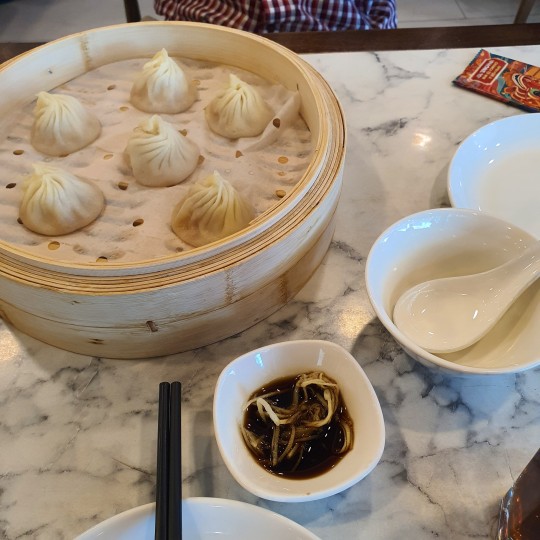
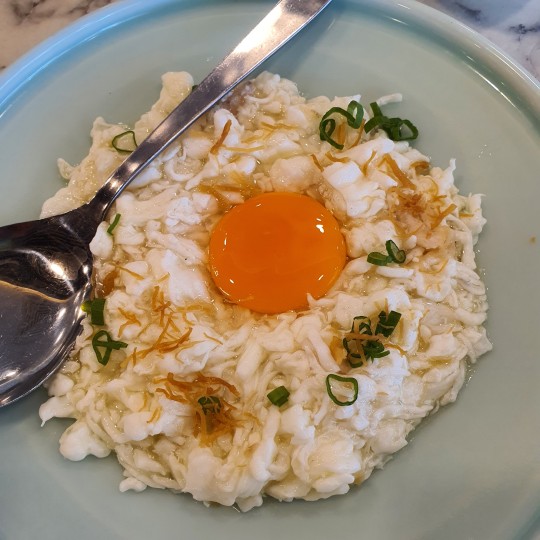


youtube
There was a full day of site visits for work and it was like a school excursion! Whilst I can't share videos and photos of the places I visited, they'd arranged for a catered lunch. Crispy wanton, battered fish, chicken, mixed vegetables, spring roll and fried rice - a tasty balanced meal that made me pretty happy. With a full belly, we continued with the back-to-back site visits. It was a hectic day and I was exhausted, but it was interesting and enjoyable.

I don't crave fastfood but when the craving for laksa hits, it's so intense, I dash to the nearest place which serves a decent version to get my fix. QQ thick bee hoon (vermicelli) submerged in fragrant spicy broth is topped with fish cake slices, see hum (cockles), tau pok (bean puff), crunchy bean sprouts and a dollop of sambal. This bowl of laksa cost $5 with added see hum. Toss in an iced local coffee and the total came up to $6.80, roughly about the same price as a Macdonald's meal here. Naturally, I gravitate towards our local favourite since I find it more delicious than fastfood!

youtube
A breakfast value meal at Macdonald's is priced at $6 - $9.60 in my country, whereas my hearty morning meal of noodles with bouncy fish cake, onion scrambled eggs and curry vegetables set me back just $3.70. A hot coffee is priced at 70 cents at my usual breakfast hangout, bringing the total to $4.40. High protein and fibre for a fraction of the price of a fastfood meal; why would I not opt for local fare? To me, fastfood meals are overpriced based on their nutritional value.

ASEAN is sending help to Gaza. Singapore has completed its first airdrop of food and critical supplies. Malaysia's NGO, KHOM, will be doing the same for food boxes. More importantly, they're not being hypocritical about it, unlike countries sending weapons to Israel that enable it to commit genocide and in the same breath, pretending to send aid to Palestinians. I mean, you can't sincerely want to save the very same people you're indirectly killing, right? 下次见!
0 notes
Text
Singapore Laksa War: Which Stall Has The Original Katong Laksa Recipe? |...
youtube
MARCEDRIC KIRBY FOUNDER CEO.
MARCEDRIC.KIRBY INC.
THE VALLEY OF THE VAMPIRES
0 notes
Text
Epicurean Expeditions: Unveiling Cultural Riches through Culinary Journeys
In a world where the intersection of cultures creates a vibrant mosaic, culinary journeys emerge as a gateway to exploring the diverse tapestry of humanity. "Epicurean Expeditions: Unveiling Cultural Riches through Culinary Journeys" beckons us to embark on a gastronomic adventure, transcending borders to delve into the heart of different societies through their flavors and connections.
The Alchemy of Culinary Exploration
Culinary journeys, akin to epicurean expeditions, are not merely about tasting exotic dishes; they are a holistic experience that engages all the senses. The aroma of spices, the sizzle of street food stalls, and the vibrant colors of fresh produce in local markets create an immersive narrative, allowing us to step into the soul of a culture through its cuisine.
Imagine wandering through the narrow alleys of Marrakech, where the air is laced with the scent of cumin and coriander. Here, the traditional tagines, bursting with succulent meats and aromatic spices, serve as portals to Moroccan history and hospitality. Each bite becomes a journey through time, connecting the modern palate with centuries-old culinary traditions.
Culinary Crossroads: Where Flavors Converge
One of the remarkable aspects of culinary journeys is the way flavors converge at the crossroads of cultures, creating a harmonious blend that is both familiar and novel. Picture the bustling streets of Singapore, where hawker centers offer a tempting array of dishes from Chinese, Malay, Indian, and Peranakan cuisines, all coexisting in a vibrant gastronomic symphony.
In such culinary crossroads, a plate of Hainanese chicken rice might share the table with a spicy bowl of laksa or a fragrant serving of biryani. The richness of these intersections isn't just in the flavors; it lies in the connections formed around shared tables, where diverse backgrounds and tastes come together in a celebration of culinary unity.
The Language of Food: A Universal Dialect
Food serves as a universal language, transcending linguistic barriers and cultural nuances. Culinary exploration becomes a journey of communication, where every dish tells a story, and every shared meal becomes a conversation. In the lively street markets of Mexico City, for instance, the language of tacos, tamales, and salsas becomes a cultural dialect that unites locals and visitors alike.
The simplicity of a shared taco, filled with flavorful meats and accompanied by a squeeze of lime, fosters connections that go beyond words. It's a communal experience that transcends nationality, transforming strangers into friends as they savor the richness of Mexican street food together.
Preserving Tradition, Embracing Innovation
Culinary journeys showcase the delicate balance between preserving traditional recipes and embracing innovation. In the historic alleys of Kyoto, Japan, where tea houses have stood for centuries, the art of kaiseki dining embodies this harmonious coexistence. Kaiseki, a multi-course meal rooted in Japanese tradition, adapts to contemporary palates while maintaining its cultural essence.
The meticulous preparation of seasonal ingredients and the artful presentation of a kaiseki meal reflect a commitment to culinary heritage. Yet, the inclusion of modern techniques and creative twists speaks to the dynamic nature of culinary evolution. Culinary journeys capture the spirit of a culture in transition, where the old and the new dance together on the plate.
From Farm to Fork: Culinary Origins Explored
To truly understand a culture through its cuisine, one must trace the journey of ingredients from the farm to the fork. Culinary journeys often lead to local markets, where the vibrancy of fresh produce mirrors the richness of a region's agricultural traditions. Imagine strolling through the stalls of a Provencal market in France, where plump tomatoes, fragrant herbs, and wheels of artisanal cheese create a sensory feast.
Participating in the local food chain, from purchasing ingredients to observing traditional cooking methods, offers a profound connection to a community's way of life. It's an opportunity to witness the dedication of farmers, the craftsmanship of artisans, and the resilience of culinary traditions passed down through generations.
Culinary Diplomacy: Breaking Bread for Understanding
In a world often divided by differences, culinary diplomacy emerges as a powerful tool for fostering understanding. Breaking bread together becomes a shared experience that transcends political and cultural divides. Initiatives like "gastrotourism" or culinary exchange programs facilitate cross-cultural communication through shared meals, emphasizing the universality of human connection.
Consider the symbolic act of sharing a cup of Turkish coffee, where the preparation and consumption hold cultural significance. In the act of sipping slowly and engaging in conversation, barriers dissolve and shared appreciation for the ritual creates bridges of understanding. Culinary diplomacy, in its simplicity, becomes a profound means of promoting global unity.
Fusion Fare: The Art of Culinary Synthesis
As culinary journeys traverse diverse landscapes, the concept of fusion cuisine takes center stage. It's a celebration of culinary synthesis, where disparate ingredients and techniques from different cultures come together to create something entirely new. The streets of Los Angeles, with its food trucks offering Korean-Mexican tacos and sushi burritos, exemplify the dynamic nature of fusion fare.
Fusion cuisine isn't about diluting cultural identities; instead, it is an artistic expression that showcases the interconnectedness of global flavors. The harmonious marriage of diverse elements on a plate exemplifies the beauty of culinary exploration, where innovation and tradition merge to create memorable dining experiences.
The Culinary Souvenir: A Taste of Travel
Culinary journeys leave a lasting imprint not only on the palate but also in the form of edible souvenirs. These gastronomic mementos encapsulate the essence of a destination, allowing travelers to carry a piece of their experiences back home. From the aromatic spices of Morocco to the artisanal chocolates of Belgium, these culinary souvenirs serve as tangible reminders of the journey.
"Epicurean Expeditions: Unveiling Cultural Riches through Culinary Journeys" invites us to savor the richness of humanity through the lens of global gastronomy. Culinary exploration is not just about food; it is a celebration of diversity, a testament to the shared experiences that bind us together as a global community.
As we embark on epicurean expeditions, let us savor the flavors that tell tales of tradition, innovation, and the shared human experience. Through the art of seeing, eating, and meeting across different cultures, our culinary journeys are a banquet of diversity, fostering connections that transcend borders and creating a world where the richness of our differences is celebrated. So, with an adventurous spirit and an open palate, let the epicurean expeditions begin.
0 notes
Text
Laksa recipe - Unveiling Singapore’s Katong Laksa flavours
0 notes
Text
Exploring Singapore's Culinary Delights: A Gastronomic Journey Through Bento Specials, Vegetarian Catering, Barbecue Buffets, Dim Sum, and Vegan Cuisine
Indulge Your Palate in the Vibrant World of Singaporean Gastronomy
Introduction
Singapore, a melting pot of cultures and traditions, is a paradise for food lovers. From aromatic spices to exquisite flavors, the citystate's culinary scene is a reflection of its diverse heritage. In this gastronomic journey, we will explore the tantalizing array of dishes that Singapore has to offer. Buckle up as we embark on a delightful adventure through Bento Specials, Vegetarian Catering, Barbecue Buffets, Dim Sum, and Vegan Cuisine, uncovering the unique tastes and stories behind each culinary delight.
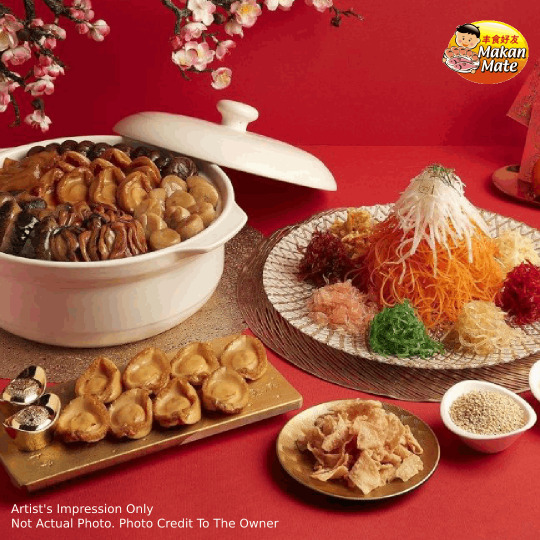
I. Bento Specials: Where Art Meets Flavor
The Artistry of Bento
In Singapore, Bento boxes are not just meals; they are masterpieces crafted with precision and creativity. From delicate sushi rolls to vibrant arrangements of tempura and teriyaki, Bento specials in Singapore are a feast for the eyes and the taste buds. Explore the artistry behind these perfectly arranged boxes and discover the meticulous techniques that chefs employ to create these edible works of art.
Sushi Sensations
Delve into the world of sushi, where fresh fish meets seasoned rice in a harmonious blend of textures and flavors. Learn about the different types of sushi, from Nigiri to Maki, and the art of pairing them with the perfect dipping sauces.
Tempura Temptations
Crispy, light, and incredibly flavorful, tempura is a favorite in Singaporean Bento boxes. Uncover the secrets to achieving the perfect crunch and explore the variety of ingredients that can be transformed into delectable tempura delights.
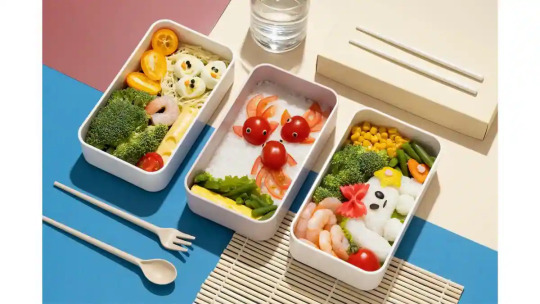
II. Vegetarian Catering: Embracing Nature’s Bounty
The Rise of Vegetarianism
In recent years, there has been a significant shift towards vegetarianism in Singapore. Embracing this trend, the city's culinary scene has witnessed a surge in innovative and mouthwatering vegetarian dishes. Explore the evolution of vegetarian cuisine in Singapore and the chefs' creative use of fresh, locally sourced ingredients.
PlantBased Perfection
Discover the art of creating plantbased masterpieces that rival their meat counterparts. From savory curries to grilled vegetable medleys, vegetarian catering in Singapore offers a diverse range of dishes that cater to every palate.
Fusion Flavors
Explore the fusion of traditional Singaporean flavors with vegetarian cuisine. From vegetarian laksa to tofubased dim sum, chefs are experimenting with innovative combinations, resulting in dishes that surprise and delight even the most discerning food enthusiasts.
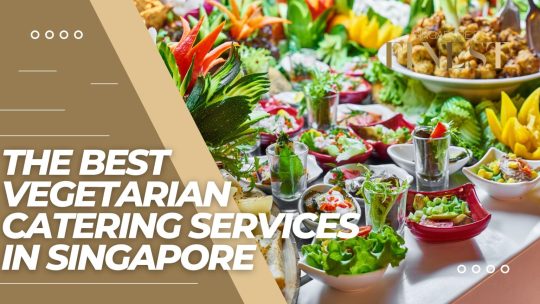
III. Barbecue Buffets: Where Smoke Meets Sizzle
The Allure of Barbecue Buffets
Barbecue buffets in Singapore are a carnivore's dream come true. The tantalizing aroma of grilled meats, the sizzle of sauces, and the smoky ambiance create an unforgettable dining experience. Explore the diverse array of meats, marinades, and grilling techniques that make Singaporean barbecue buffets a feast for meat lovers.
Grilling Techniques
Delve into the world of grilling techniques, from slow smoking to highheat grilling. Learn how different meats require different approaches to achieve the perfect tenderness and flavor, and how Singaporean chefs master these techniques to create mouthwatering barbecue dishes.
Marinades and Sauces
Sauces and marinades are the heart and soul of any barbecue buffet. Discover the secret recipes behind Singapore's signature barbecue sauces, from tangy tamarind to spicy chili concoctions. Explore the art of marinating meats to enhance their flavors and create a symphony of tastes with every bite.
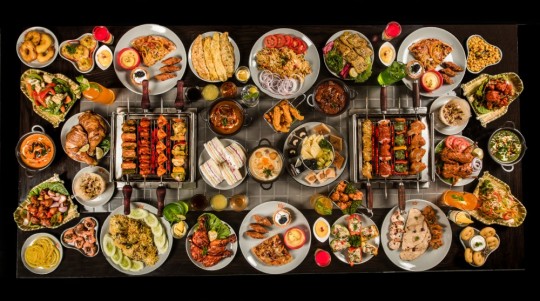
IV. Dim Sum: BiteSized Delights from the Orient
Dim Sum: A Culinary Symphony
Dim Sum, the bitesized delicacies originating from Cantonese cuisine, have found a special place in Singaporean hearts. From steamed dumplings to crispy spring rolls, Dim Sum restaurants in Singapore offer a wide array of these delectable treats. Explore the rich history of Dim Sum and the intricate artistry involved in crafting these tiny yet flavorful wonders.
Dumplings and Rolls
Dive into the world of dumplings and rolls, exploring the different types and fillings that make each one unique. From har gow to siu mai, learn about the art of wrapping and folding, and discover the delightful surprises hidden within each delicate parcel.
Steamed, Fried, or Baked?
Dim Sum offers a variety of cooking methods, each lending a distinct texture and flavor to the dishes. Explore the differences between steamed, fried, and baked Dim Sum, and understand how these techniques transform simple ingredients into culinary delights that dance on your taste buds.
V. Vegan Cuisine: Compassionate Dining in Singapore
The Vegan Revolution
As awareness about animal welfare and environmental conservation grows, vegan cuisine has taken Singapore by storm. Restaurants and chefs are embracing plantbased ingredients, transforming them into mouthwatering dishes that cater to vegans and nonvegans alike. Explore the creativity behind Singapore's vegan culinary scene and discover the innovative dishes that are reshaping the city's gastronomic landscape.
PlantPowered Creativity
Vegan chefs are pushing the boundaries of culinary creativity, using ingredients like tofu, jackfruit, and tempeh to create dishes that mimic the textures and flavors of meat. Explore the techniques behind plantbased burgers, sausages, and even desserts, and learn how chefs achieve the perfect balance of taste and nutrition.
Sustainable Dining
Apart from being compassionate, vegan cuisine aligns with the principles of sustainability. Dive into the ecofriendly practices adopted by vegan restaurants in Singapore, from sourcing local, organic ingredients to minimizing food waste. Discover how vegan dining not only nourishes the body but also contributes to a greener, more sustainable future.
Conclusion
Singapore's culinary landscape is a vibrant tapestry woven with diverse flavors, culinary techniques, and cultural influences. From the artistic elegance of Bento specials to the sizzling allure of barbecue buffets, the citystate offers a gastronomic adventure that caters to every palate. Whether you're a meat lover, a vegetarian enthusiast, or a vegan advocate, Singapore's culinary delights are sure to leave you craving for more. So, indulge your senses, explore the culinary wonders of this city, and let your taste buds embark on a journey they won't soon forget.

0 notes
Link
0 notes
Link
0 notes
Text
I Went To Singapore To Find The ULTIMATE Singapore Laksa Recipe | Marion...
youtube
1 note
·
View note
Text
This winter, ditch your regular soup for a bowl of flavoursome ‘Laksa’ (recipe inside)
This winter, ditch your regular soup for a bowl of flavoursome ‘Laksa’ (recipe inside)
It is officially the soup season of the year! And while you may be sticking to your regular tomato soup or a pumpkin one or any of the creamy ones that have caught your fancy, have you ever tried Laksa? A staple of South East Asian countries including Indonesia, Thailand, Malaysia, and Singapore, Laksa makes for a flavoursome soup that’s a must-try this season.
Chef Meghna Kamdar took to…

View On WordPress
0 notes
Text
Discover the Authentic Flavors of Singapore with Woh Hup Singapore Laksa Paste: A Culinary Delight!
Singaporean cuisine is renowned for its diverse flavors and unique culinary experiences. One iconic dish that captures the essence of Singaporean food is Laksa. With its rich, aromatic broth and a medley of tantalizing ingredients, Laksa has gained popularity worldwide. When it comes to preparing this delectable dish at home, one name stands out – Woh Hup Singapore Laksa Paste. In this article, we will delve into the world of Woh Hup Singapore Laksa Paste, exploring its origins, ingredients, and how it elevates your Laksa experience to new heights.
A Brief History of Woh Hup Singapore Laksa Paste: Woh Hup is a renowned food company in Singapore with a long-standing history of producing high-quality food products. Their Singapore Laksa Paste has been a favorite among locals and tourists alike for decades. The recipe for this paste is rooted in Singapore's cultural heritage and has been perfected over time, ensuring an authentic and flavorful Laksa experience.
The Ingredients that Make it Exceptional: Woh Hup Singapore Laksa Paste is crafted using a combination of carefully selected ingredients that form the base of a delicious Laksa broth. The paste typically includes a blend of aromatic spices, such as lemongrass, galangal, and chili, which infuse the dish with a distinctively fragrant and spicy flavor. The addition of coconut milk adds richness and creaminess to the broth, balancing out the heat from the spices.
Easy Preparation and Versatility: One of the key advantages of using Woh Hup Singapore Laksa Paste is its convenience. The paste comes in a ready-to-use form, making it effortless to prepare a flavorful Laksa at home. Simply mix the paste with coconut milk and water, add your choice of protein, vegetables, and noodles, and simmer to perfection. The versatility of the paste allows you to customize your Laksa according to your preferences, whether you prefer seafood, chicken, tofu, or a combination of flavors.
Authentic Taste and Culinary Excellence: Woh Hup Singapore Laksa Paste is renowned for its authentic taste that captures the essence of Singaporean street food. The careful balance of flavors in the paste ensures that every spoonful of Laksa bursts with umami and delivers a satisfying and indulgent experience. The paste's quality and consistency have made it a go-to choice for both home cooks and professional chefs seeking to replicate the rich and vibrant flavors of Singaporean Laksa.
A Gourmet Experience in the Comfort of Your Home: With Woh Hup Singapore Laksa Paste, you can bring the gourmet experience of Singaporean Laksa into your own kitchen. Whether you're a seasoned chef or a novice in the culinary world, this paste allows you to create a restaurant-quality dish with minimal effort. Impress your family and friends with the authentic taste of Singaporean Laksa and enjoy the satisfaction of crafting a culinary masterpiece from the comfort of your home.
Conclusion: Woh Hup Singapore Laksa Paste is a culinary gem that encapsulates the rich flavors of Singaporean cuisine. Its authenticity, convenience, and versatility make it a must-have for Laksa lovers and those looking to explore the vibrant world of Singaporean food. With Woh Hup Singapore Laksa Paste, you can embark on a gastronomic journey that delights your taste buds and transports you to the bustling streets of Singapore, all from the comfort of your own kitchen. Elevate your Laksa experience and savor the magic of Woh Hup Singapore Laksa Paste today!
#WohHupLaksaPaste#SingaporeLaksa#AuthenticFlavors#LaksaLove#SpiceUpYourLife#TasteOfSingapore#LaksaCravings#EasyCooking#FlavorfulDelights#FoodieFavourites#LaksaLovers#HomeCookedGoodness#AsianCuisine#InstantLaksa#QuickAndDelicious#TantalizingTaste#YummyLaksa#SatisfyingSoups#WohHupSauces#SavorTheSpice#lucky store#buy now#imported#luckystore.in#entertainment
0 notes
Text
Veggie Curry Laksa with Tofu (Easy & Authentic Recipe)
Veggie Curry Laksa with Tofu (Easy & Authentic Recipe)
Veggie Laksa with Tofu (Easy & Authentic Recipe)
Laksa is a typical street food dish in Malaysia and Singapore, which is known all over the world for its great taste. Typically, the laksa is prepared with a chicken broth, meat and shrimp. There is also fish sauce in the curry paste. However, our vegetarian recipe tastes just as authentic as the original one we ate on the streets of Kuala Lumpur…
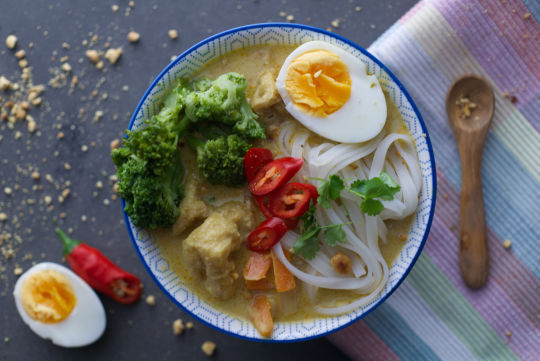
View On WordPress
0 notes
Text
Things You didn’t know about Peranakan as well as Nyonya Cuisine
Peranakan is Malay meaning “born here” which is the Straits-born population who are of Chinese as well as Malay or Indonesian origin. Male Peranakans are called “Baba” while females, as well as the entire culture of this matriarchal society, are known in the form of “Nyonya”. Peranakan Cuisine is available in various parts of the Malay Archipelago particularly in Malaysia, Indonesia and Singapore.
Peranakan cuisine is often regarded as a blend from Chinese (mainly Hokkien but also Hainanese), Malay, Indian, Thai and Western colonial (Portugese, Dutch and English) influences. Peranakan food buffet was initially conceived as a mixture from Chinese components and culinary techniques , as well as the indigenous and local ingredients utilized by the Malays who were indigenous to the area. The flavors are typically spiced and aromatic, and include ingredients that reflect its hybridized roots. The most well-known ingredients are Malay spices like belacan (dried fermented shrimp paste) and daun limau purut(kaffir lime leaf). Other ingredients typically included in Chinese cuisine include pork as well as Kiam the chye (pickled vegetables). To give a distinct tang often, exotic fruits like mangoes and belimbing (a fruit in similar family to starfruit) can be used to enhance the flavor of the dishes too.
Below are some fascinating information that you might not know about Peranakan Cuisine
“Peranakan”, as well as “Nyonya”, can be used interchangeably when discussing the food.
When Chinese immigrants got married, it established an entirely unique culture that had different beliefs, customs, and meals. Because women were mostly in charge of cooking meals for the family as well as the entire community, this type of food is referred to in the term “Nyonya”. In both cases, Baba Nyonya and Nyonya are polite and affectionate words for women and men which originate of an Indonesian language.
Peranakan and Nyonya dishes aren’t the same
Every time a dish is made, it is subject what the dish is prepared according to favorite ingredients and flavours by the chefs. The most commonly used ingredients for Peranakan food preparation include laksa leaves, coconut milk lemongrass, and tamarind. Due to the numerous components and food items, many recipes are very flavorful and pack a punch.
Different regions affect the styles of cooking used in Peranakan food
Based on the geographic influences of the various communities and the regional influences of each, there is a variety of regional versions to Peranakan food. For instance, the cuisines from Penang, the main island in Penang in the northern region of Peninsular Malaysia are influenced by the Thais which result in a higher use of tamarind as well as other sour ingredients such as pineapple. However food items from Singapore or Malacca are more heavily influenced by Indonesian cuisine and often make use of coconut milk. Laksa is a classic dish (spicy noodles cooked in curry soup). Laksa can be made in two ways such as the sour laksa recipe from Penang as well as the laksa lemak based on coconut milk that comes from Singapore as well as Southern Malaysia.
Peranakan food takes a long cooking time
Cooking Peranakan food demands a significant amount of patience and preparation ahead of time. Seafood and meats must be covered in spices for several hours prior to cooking so that they are able to absorb all the spices needed for the cooking process later. It is also important for the spices to prepare ahead since fresh spices can provide more intense flavours. So, the chef will generally make use of a mortar and pestle to crush the ingredients like wild ginger, lemongrass, and turmeric root, which are the main ingredients that give Peranakan food its distinctive and distinctive flavor that is loved by many.
Are you in search of delicious, authentic Peranakan cuisine in Singapore?
Royal Cuisine Group is a Halal-certified food catering company that provides a specially-curated Peranakan buffet catering that includes many different dishes that your guests can take a bite of.
#premium halal bento set#bento set delivery halal#halal bento delivery singapore#bento delivery halal#mini catering halal#bento catering halal singapore#best catering in halal#corporate food catering halal#halal catering bento
1 note
·
View note
Text
Go on a bus journey from Singapore to Johor Bahru to explore the food in Johor Bahru
It's a culinary haven! Johor Bahru goes unnoticed, although many people flock to places with great food, such as Penang, Malacca, Ipoh, or even Kuala Lumpur. However, thanks to the restaurants and recipes that have been handed down through the years, this gastronomic paradise delivers some of Malaysia's most authentic tasting cuisine! With this list of unusual cafés, we've got you covered if you want to relax in a cafe. Here's a list of food to explore in Johor Bahru after you take a bus from Singapore and reach Johor Bahru.

Laksa
Not just in Johor, but in Malaysia in general, laksa is a well-liked meal. But practically every state in Malaysia gives this well-loved meal a special spin of its own. At the same time, rice noodles or egg noodles are typically used in laksa dishes, Johor laksa substitutes for spaghetti.
In addition to the unusual noodle option, Johor laksa features a somewhat richer and thicker gravy. Shredded meat and veggies are typically added to the dish's top, along with a squeeze of lime to tie everything together.
Lei Cha
You'll love the assortment of vegetables in the green broth, which is prepared from herbs and is referred to as Lei Cha - the Ground Tea. This dish has a nutritious combination that tastes fantastic. The dish improves with each passing second after you pour the broth over the rice and mixed vegetables. Usually, this broth has a minty flavour. Cereals and crispy peanuts taste well together and offer a fun variation of texture and scent. While some people like to combine rice and broth together, others prefer to eat them separately. You can have this meal solo or with Yong Tau Fu.
Nasi Briyani Gam
The rice is typically cooked separately from the other components in the majority of biryani meals before being combined before serving. However, the aromatic basmati rice is cooked in the same pot as the other ingredients to create the ideal biryani flavour. As a result, the rice acquires an additional layer of aroma from the oils and perfumes of the other ingredients that have been added. Additionally, it keeps the rice fluffy and moist.
Char Kway Teow
In Malaysia, Char Kway Teow is among the top three dishes in the Chinese noodle category. However, you'll be dumbfounded after eating a dish of stir-fried flat rice noodles with shrimp, eggs, Chinese lap Cheong sausage, eggs, bloody cockles, bean sprouts, and chives, along with the proper amount of salt.
In Johor, there are many stalls that sell Char Kway Teow in varying flavours. You can order your food sweet, salty, or spicy. The secret to making great kway teow stir-fried noodles is to stir-fry them in a deep, hot wok with garlic and oil. Watching the chef prepare it while bright orange flames are encircling the wok is an intriguing treat.
Lontong Kering
One of the most popular breakfast foods in Johor Bahru is called lontong kering. The best comparison for this rustic cuisine would be to the Johorean version of nasi lemak, with the difference being that this dish is far more satisfying.
While the kind of rice used to produce lontong kering isn't particularly remarkable, the way it's prepared and cooked is. First, the rice is steam-cooked after being firmly wrapped in flavorful banana leaves. As a result, the cooked rice is tightly packed. After that, the rice is divided into portions and served alongside other side dishes such as rendang, sambal, and veggies.
Bak Kut Teh
Pork ribs simmered in broth with a blend of herbs and spices form the basis of the Bak Kut Teh soup. Along with pork ribs, tau pork, mushrooms, and offal are frequently included in the soup. Oolong tea complements it effectively in order to lessen greasiness and increase freshness.
The three primary varieties of Bak Kut Teh are the light-coloured, spicy variety, the dark-coloured, more soy sauce- and salt-laden kind, and the herbal one with a potent herbal flavour. Any of the three varieties can be found in Johor, with the darker/saltier kind being the most common. This dish is typically offered for breakfast and lunch in many hawker booths and restaurants.
Conclusion
You can now travel from Singapore to Johor Bahru with Transtar Travel and enjoy all these scrumptious foods in Johor Bahru. Transtar provides first-rate amenities to improve the commuting experience on all of its buses. With redBus, purchasing Transtar bus tickets online is simple.
0 notes